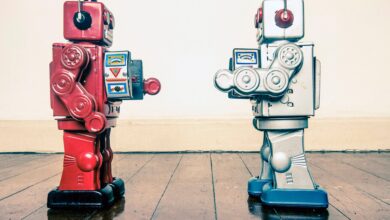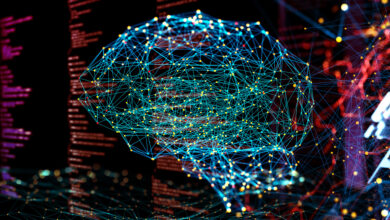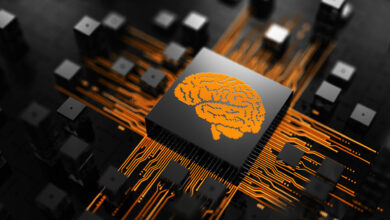AI Security
-
Meta-Attacks: Utilizing Machine Learning to Compromise Machine Learning Systems
Meta-attacks represent a sophisticated form of cybersecurity threat, utilizing machine learning algorithms to target and compromise other machine learning systems. Unlike traditional cyberattacks, which may employ brute-force methods or exploit software vulnerabilities, meta-attacks are more nuanced, leveraging the intrinsic weaknesses…
Read More » -
How Saliency Attacks Quietly Trick Your AI Models
"Saliency" refers to the extent to which specific features or dimensions in the input data contribute to the final decision made by the model. Mathematically, this is often quantified by analyzing the gradients of the model's loss function with respect…
Read More » -
Batch Exploration Attacks on Streamed Data Models
Batch exploration attacks are a class of cyber attacks where adversaries systematically query or probe streamed machine learning models to expose vulnerabilities, glean sensitive information, or decipher the underlying structure and parameters of the models. The motivation behind such attacks…
Read More » -
How Model Inversion Attacks Compromise AI Systems
A model inversion attack aims to reverse-engineer a target machine learning model to infer sensitive information about its training data. Specifically, these attacks are designed to exploit the model's internal representations and decision boundaries to reverse-engineer and subsequently reveal sensitive…
Read More » -
When AI Trusts False Data: Exploring Data Spoofing’s Impact on Security
Data spoofing is the intentional manipulation, fabrication, or misrepresentation of data with the aim of deceiving systems into making incorrect decisions or assessments. While it is often associated with IP address spoofing in network security, the concept extends into various…
Read More » -
Targeted Disinformation
Targeted disinformation poses a significant threat to societal trust, democratic processes, and individual well-being. The use of AI in these disinformation campaigns enhances their precision, persuasiveness, and impact, making them more dangerous than ever before. By understanding the mechanisms of…
Read More » -
Twitter API for Secure Data Collection in Machine Learning Workflows
While APIs serve as secure data conduits, they are not impervious to cyber threats. Vulnerabilities can range from unauthorized data access and leakage to more severe threats like remote code execution attacks. Therefore, it's crucial to integrate a robust security…
Read More » -
The Dark Art of Model Stealing: What You Need to Know
Model stealing, also known as model extraction, is the practice of reverse engineering a machine learning model owned by a third party without explicit authorization. Attackers don't need direct access to the model's parameters or training data to accomplish this.…
Read More » -
5G Innovation Zones in Canada for Launching AI and 5G in Tandem
In my previous post I argued that if Canada wants to succeed with its AI-focused innovation agenda, it should also be at the forefront of 5G innovation and development. Canada could get ahead in the global 5G race not by…
Read More » -
5G and AI – Getting Smart About 5G and AI in Canada
Canada has been investing in machine learning and artificial intelligence (AI) for longer than most of the industrialized world. Dr. Geoff Hinton of Google helped ignite the field of graphics processing unit (GPU) deep learning at the University of Toronto.…
Read More » -
AI and 5G: AI at the 5G Core – A Double-Edged Sword
If you’ve ever been to an expensive restaurant and ordered a familiar dish like, say, lasagna, but received a plate with five different elements arranged in a way that does not at all resemble what you know as lasagna, then…
Read More » -
Risks of AI – Meeting the Ghost in the Machine
Because it demands so much manpower, cybersecurity has already benefited from AI and automation to improve threat prevention, detection and response. Preventing spam and identifying malware are already common examples. However, AI is also being used – and will be…
Read More » -
Digital Double Helix: Why the Fates of 5G and AI are Intertwined
In 2013, George F. Young and colleagues completed a fascinating study into the science behind starling murmurations. These breathtaking displays of thousands – sometimes hundreds of thousands – of birds in a single flock swooping and diving around each other,…
Read More » -
AI-Exacerbated Disinformation and Cyber Threats to Democracy
Recent events have confirmed that the cyber realm can be used to disrupt democracies as surely as it can destabilize dictatorships. Weaponization of information and malicious dissemination through social media pushes citizens into polarized echo chambers and pull at the…
Read More » -
AI: The Shifting Battlefield in the Cyber Arms Race
Cybersecurity strategies need to change in order to address the new issues that Machine Learning (ML) and Artificial Intelligence (AI) bring into the equation. Although those issues have not yet reached crisis stage, signs are clear that they will need…
Read More »














